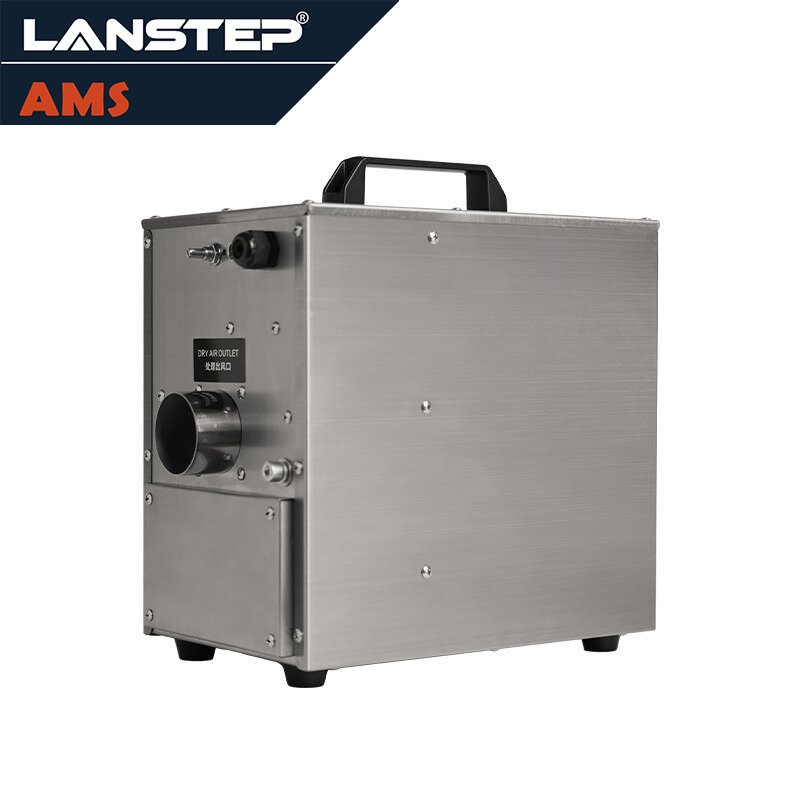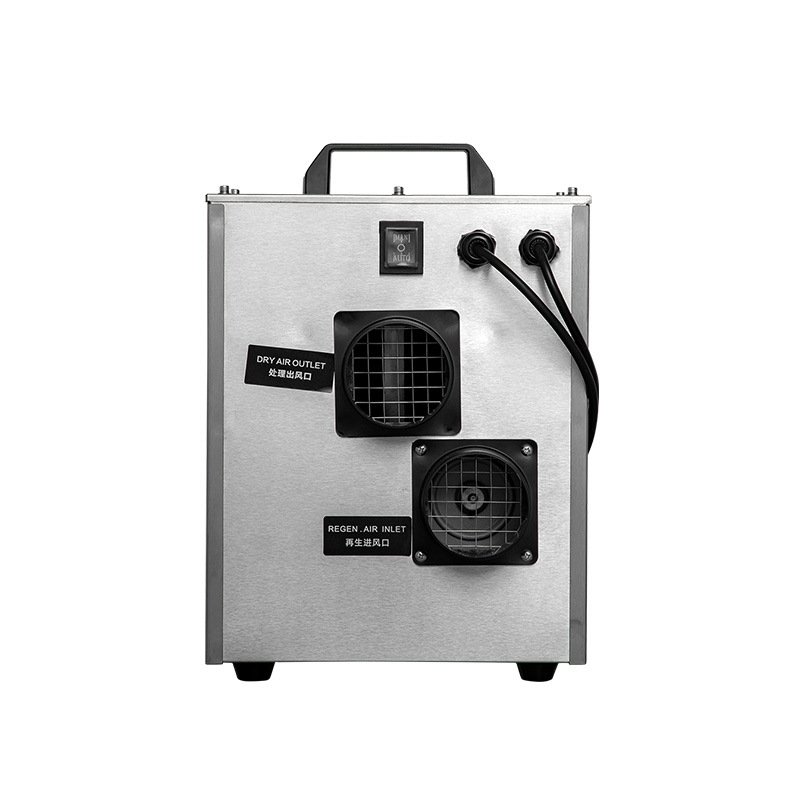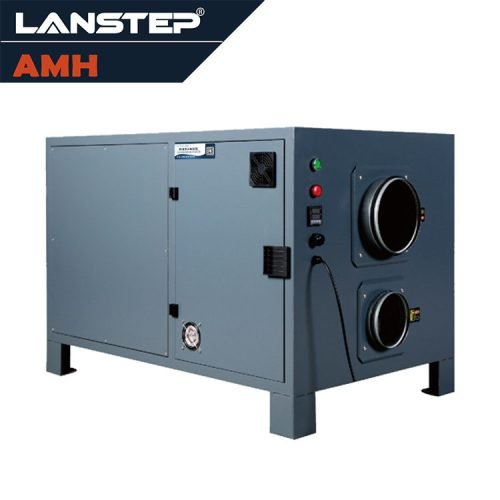DEHUMIDIFIERS&VENTILATION FANS
We offer a comprehensive range of dehumidifiers and fans for home commercial and industrial use, including advanced technology in various types and capacities. Whatever your needs, we have the right solution for you. Please browse our product range and speak to our experts for more information.
Mini Desiccant Dehumidifier
The Mini Desiccant Dehumidifier features advanced desiccant technology, making it ideal for keeping environmental rooms at low to medium humidity levels. Compact and lightweight, it is easy to install and perfect for a variety of applications.
Advantages
• High efficiency humidity control
• Light, compact, durable and
corrosion resistant construction
• Easy inspection and maintenance
• Simple ductwork and humidistat
connections
• Easy front accessible panel
Product Description
LANSTEP’s AMS compact dehumidifiers integrate advanced
desiccant tech for reliable humidity control. Ideal for drying, mold
control, corrosion protection.
Process air: 65-200 m³/h flow, 0.62Kg/hr* moisture removal,
handling saturated, conditioned, or outside air.
Contact air seals: Separate process and reactivation air minimize
leakage.
Electrical controls: Simple system with restart, indicators, remote
run/fault status, auto/manual switch.
Drive system: Continuous rotation, basic belt arrangement, few
moving parts ensure reliability.
Reactivation utility: Solid-state modulation reduces energy
consumption, with independent fan and high-temperature
protection.
Product Data
| Model | AMS-65 | AMS-108 | AMS-200 |
|---|---|---|---|
| Dehumidification capacity (@ 20˚C, 60%)Kg/h | 0.26 | 0.52 | 0.62 |
| Process air flow (m³/h) | 65 | 108 | 206 |
| Static pressure at disposal(Pa) | 50 | 80 | 80 |
| Reactivation air flow(m³/h) | 20 | 35 | 35 |
| Static pressure at disposal(Pa) | 30 | 50 | 50 |
| Power(Kw) | 0.5 | 0.74 | 1.04 |
| Operating temperature range | -20℃~50℃ | -20℃~50℃ | -20℃~50℃ |
| Input Power | 220V/50Hz | 220V/50Hz | 220V/50Hz |
| Current(A) | 2.3 | 3.4 | 4.7 |
| Process of air intake flange sizes(mm) | 50 | 100 | 100 |
| Process of air Supply flange sizes(mm) | 50 | 75 | 90 |
| Reactivation of air intake flange sizes(mm) | / | 75 | 100*110 |
| Reactivation of air Supply flange sizes(mm) | 50 | 75 | 50 |
| Product Size(mm) | 344*190*326 | 336*260*319 | 344*298*340 |
| Net Weight(Kg) | 8 | 11.8 | 12 |
Related products
FAQ
- Operating Principle: Desiccant dehumidifiers use moisture-absorbing materials, while conventional dehumidifiers use refrigerants to condense moisture from the air.
- Low-Temperature Performance: Desiccant dehumidifiers are more effective in low-temperature environments, whereas conventional dehumidifiers may struggle or become inefficient.
- Noise Levels: Desiccant dehumidifiers typically operate more quietly compared to conventional dehumidifiers.
- Energy Efficiency: Conventional dehumidifiers are generally more energy-efficient in warm, humid conditions, whereas desiccant dehumidifiers excel in cooler, drier environments.
- Applications: Desiccant dehumidifiers are better suited for specialized environments that require low humidity levels, such as pharmaceuticals, food storage, and archival storage, while conventional dehumidifiers are commonly used in homes and offices.
- Space Size: Measure the area (in square meters or square feet) that needs dehumidification.
- Humidity Levels: Assess the current and desired humidity levels. Higher humidity levels require a dehumidifier with greater capacity.
- Environmental Temperature: Know the temperature of the space, as desiccant dehumidifiers perform well in low temperatures.
- Ventilation: Consider the ventilation of the area. Enclosed spaces often need more efficient dehumidification.
- Usage Frequency: If the dehumidifier will be used continuously, select a durable and efficient model.
- Low-Temperature Environments: Such as basements and cold storage rooms, where they remain effective.
- Industrial and Commercial Use: Including pharmaceutical manufacturing, food processing, and electronics manufacturing, where precise humidity control is crucial.
- Archival Preservation: Libraries, archives, and museums where the protection of artifacts and documents requires stable low-humidity conditions.
- Maritime and Marine Environments: On ships and boats where high humidity can cause mold and corrosion.
- Dry Storage: For grains, seeds, and other agricultural products that require low humidity for preservation.







